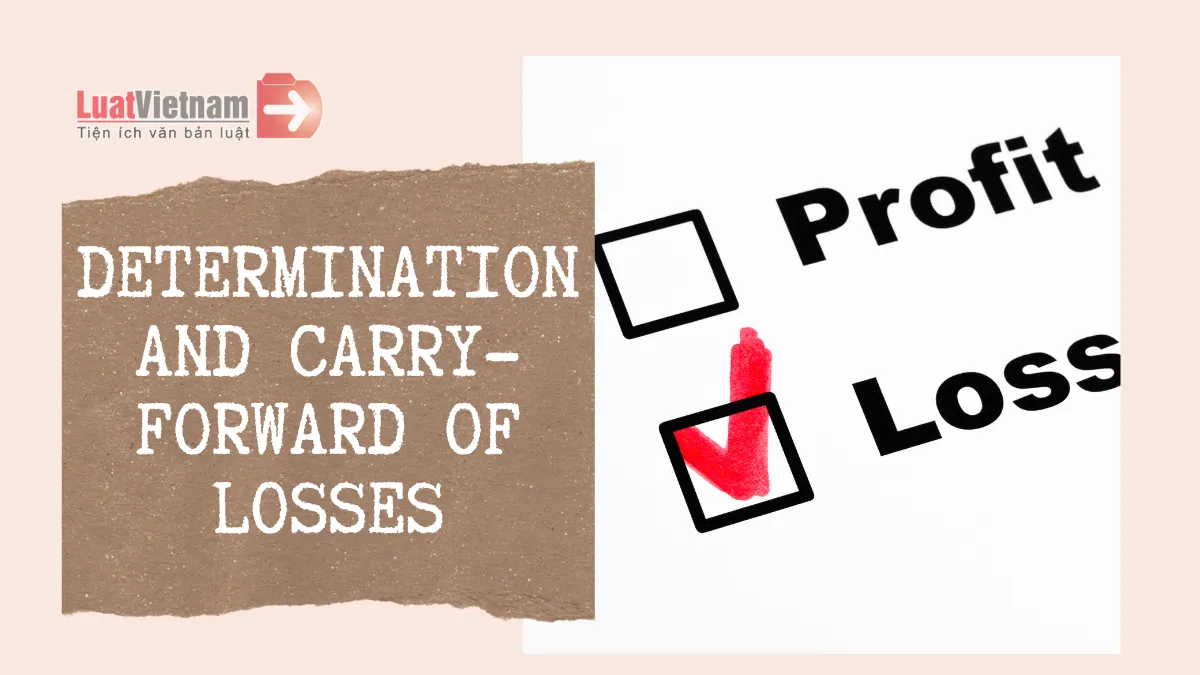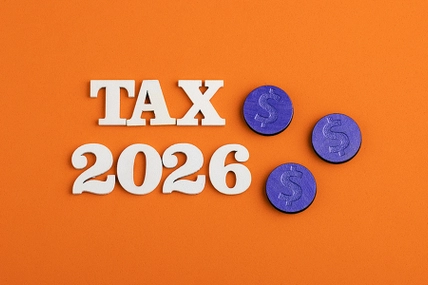Determination and carry-forward of losses when calculating enterprise income tax in order to ensure the correct definition of payable tax amounts and enterprise's rights and obligations. In accordance with law provisions, the maximum duration for loss carry-forward is 5 consecutive years for enterprises.
Enterprise income tax must be exclusive of losses carried forward from previous years
The taxed income in a tax period shall be determined to be taxable income minus tax-exempted income and losses carried forward from previous years under regulations (if any).
This content is prescribed in the determination of taxed incomes of enterprises in accordance with the provisions in Article 6, the Law on enterprise income tax 2008, Article 5, Decree No. 2018.
In particular, the enterprise income tax is defined in the formula as a formula:
Enterprise income tax = The taxed income in a tax period x Tax rate
In order to calculate the payable tax, taxed income and tax rate must be defined, in particulars:
(1) Taxed income
Taxed income = Taxable income - (Tax-exempt income + Losses carried forward under regulations)
Within that, taxable income shall be determined as follows:
Taxable income = (Turnover - Deductible expenses) + other incomes
(2) Tax rate of enterprise income tax
Normally, taxable income equals the taxed income multiplied by 20% (tax rate of 20%). Besides, a number of industries can apply a higher tax rate or preferential tax rate.

Determination and carry-forward of losses
Pursuant to Article 9, Circular No. 78/2014/TT-BTC, the enterprise determines and carries forward of losses as follows:
* Determination of losses
Loss arising in a tax period is the negative difference of taxable income exclusive of losses carried forward from previous years.
* Regulations on carry-forward of losses
- Enterprises that suffer a loss after making tax finalization may carry forward continuously the whole loss to subsequent years’ taxable incomes (taxable incomes exclusive of tax-exempt incomes). The maximum duration for loss carry-forward is 5 consecutive years, counting from the year following the year the losses arise.
Enterprises may temporarily clear their losses of a year against taxable incomes of the quarters of the following year upon making quarterly declarations and officially carry forward these losses in the following year after making annual tax finalization declarations.
Example 1: In 2020, enterprise A suffers a loss of VND 10 billion. In 2021, it generates an income of VND 12 billion. So, all the arising losses in 2020 is VND 10 billion, enterprise A must carry forward all losses to the income in 2021.
Example 2: In 2020, enterprise B suffers a loss of VND 20 billion. In 2021, it generates an income of VND 15 billion. It shall:
+ Clear the whole loss of VND 15 billion against the income in 2020;
+ Monitor and carry forward continuously the whole remaining loss amount of VND 5 billion of 2013 on the above principle of loss carry-forward to not more than consecutive 5 years, counting from the year following the year the loss arises.
- Enterprises that have a loss arising in a certain quarter of a fiscal year may carry forward a such loss from this quarter to the following quarters of that fiscal year. When making enterprise income tax finalization, enterprises shall determine the loss of the whole year and continuously clear the whole loss against their taxable incomes in the years following the year when the loss arises in accordance with the above regulations.
- Enterprises shall determine by themselves losses to be cleared against taxable incomes on the above principle. In the loss carry-forward duration, newly arising losses (excluding losses carried forward from the previous period) may be fully carried forward for not more than 5 consecutive years, counting from the year following the year the losses arise.
When an agency competent to examine and inspect enterprise income tax finalization detects a loss amount that an enterprise is allowed to carry forward is different from the loss amount determined by the enterprise itself, the loss amount allowed to be carried forward shall be determined based on the competent agency’s conclusion, and fully carried forward for not more than 5 consecutive years, counting from the year following the year the losses arise.
Past the 5-year time limit, arising losses not yet fully carried forward are not allowed to be cleared against the following years’ incomes.
Note:
An enterprise undergoing transformation, merger, consolidation, division, split-up, dissolution, or bankruptcy shall carry out tax finalization with the tax agency by the time the decision on transformation, merger, consolidation, division, split-up, dissolution, or bankruptcy is issued (unless the tax finalization is not required under regulations).
Losses that arise before the enterprise is transformed, merged, or consolidated shall be monitored in detail in the year they arise and cleared against the enterprise’s incomes of that year after transformation, merger, or consolidation and its incomes in subsequent years, which must not exceed 5 consecutive years from the year following the year they arise.
The losses which arise before the enterprise is divided or split up into other enterprises and are still in the prescribed loss-carry forward period shall be distributed to these enterprises in proportion to their ratios of equity.
Here are the regulations on determination and carry-forward of losses when calculating enterprise income tax.










